Kinetic Origami Surfaces
Kinetic Origami Surfaces: From Simulation to Fabrication
Filipa Osório, Alexandra Paio, Sancho Oliveira
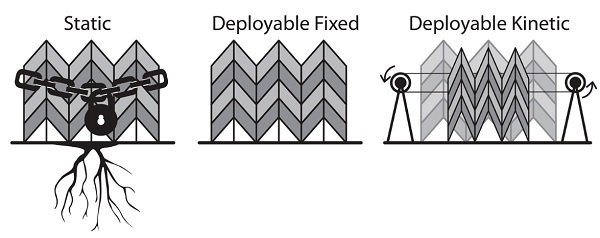
Fig.5. Groups of Origami in Architecture (Source: Authors)
On nowadays social, technological and economic context everything changes constantly so there is the persistent need to adapt at all levels.
This research defends that Architecture should do the same through the use of kinetic and interactive buildings, or elements in a building.
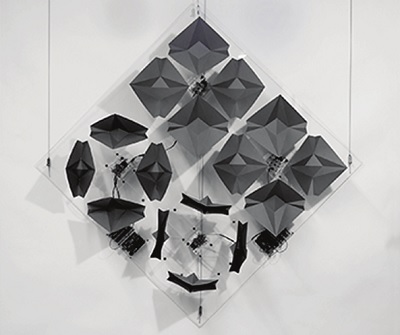
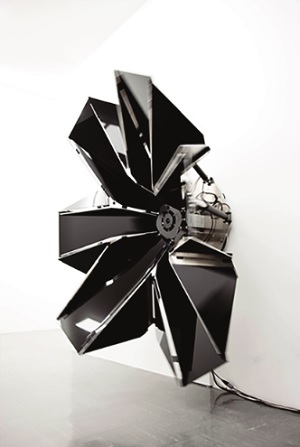
Fig.6. Auxetic Origami Fig.7. Versus
These elements should allow the building to adapt to changing needs and conditions. This article describes the current state of an ongoing research that proposes the use of kinetic Rigid Origami foldable surfaces to be used as roofs for spaces with big spans and the practical contribution that the Design Studio Surfaces INPLAY has brought to it.
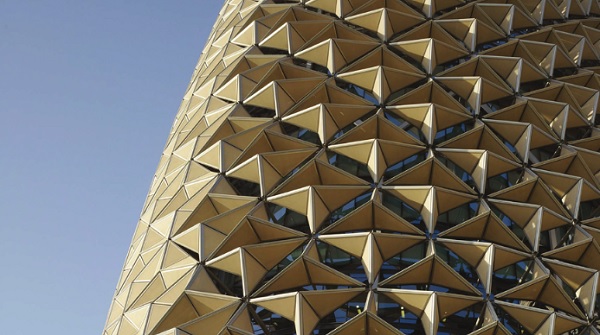
Fig.8. Al Bahr Towers
Today’s intensification of social and urban change, coupled with the responsibility of issues of sustainability, amplifies the demand for interactive architectural solutions. In the context of architectural need, the attribute of being able to adapt to changing needs is paramount in contemporary society.
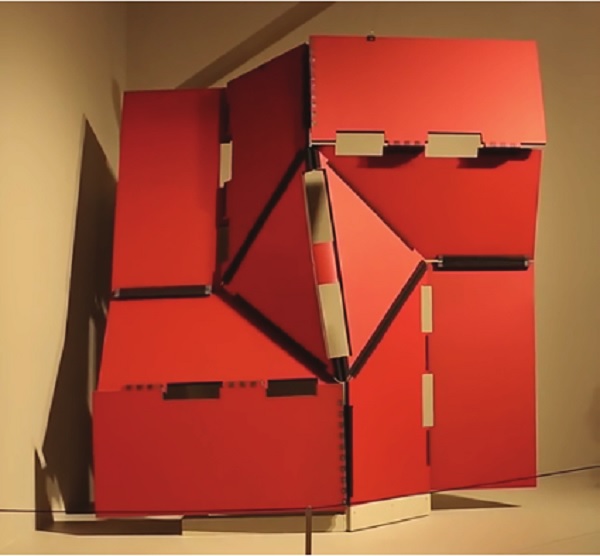
Fig.9. Origami Kinetic Sculpture
In the last decades the technological developments regarding computational design and fabrication generated advanced technologies and tools to be used in Architecture.
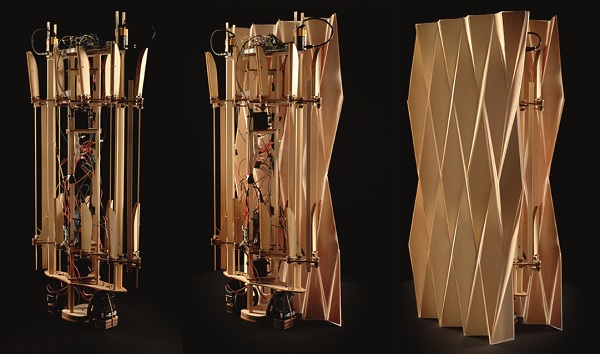
Fig.10. Wallbot (Source: www.ottocad.net)
With these tools the architect has now at his reach the possibility to create buildings that can transform themselves in order to adapt to different needs, functions and ambient or environmental conditions instead of buildings that are static and immutable on their structure requiring to be heavily equipped with thermic, sound and/or lighting systems with all the financial and environmental costs that brings.
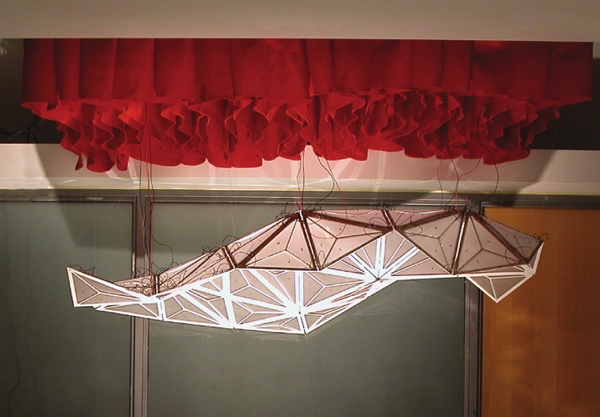
Fig.11. Tunable Sound Cloud
The kinetic deployable structures can be one way of responding to such matter. It would seem that deployable structures offer great potential for creating truly transforming, dynamic experiences and environments.
Their lightness and transportability allow them to adapt to a society that is constantly evolving and changing. Furthermore, these are reusable structures that make efficient use of energy, resources, materials and space, thus embracing the concept of sustainability.
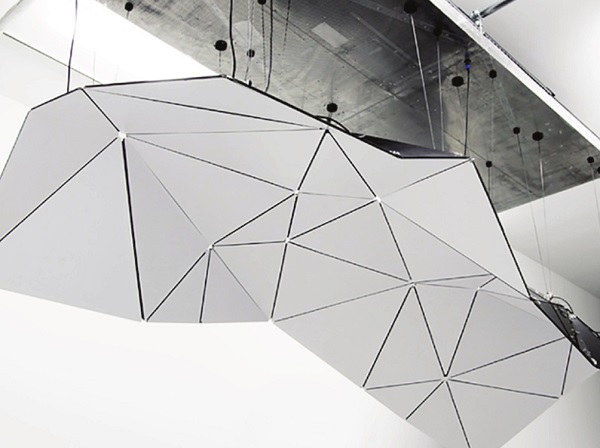
Fig.12. Tessel
This research proposes the use of Rigid Origami foldable surfaces to be used on buildings that can change themselves in order to meet the needs of a determined function or ambient/environmental demands.
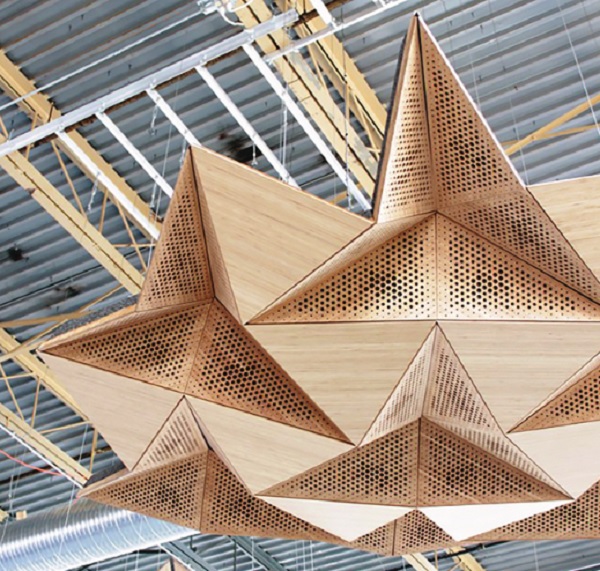
Fig.13. Ressonant Chamber (Source: www.rvtr.com)
The choice of this kind of geometry is easy to justify, Rigid Origami geometry has very clear rules that fit perfectly a kinetic architectural objective and, in a more emotional way, they are incredibly hypnotic and dazzling structures.
These surfaces have self-supporting qualities and, by the application of forces at strategic points, have the power to grow, shrink and adapt to several geometric configurations.
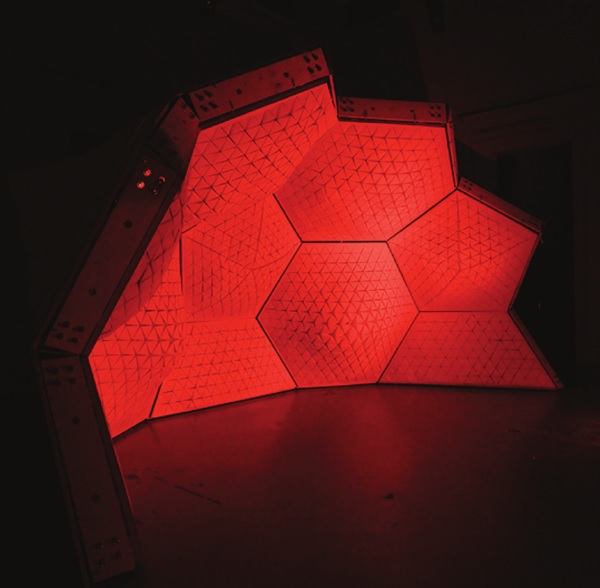
Fig.14. Cerebral Hut
Furthermore the advanced technologies allow the architects to simulate digitally several solutions, or families of solutions, test them and optimize the chosen one before construction. So this research also proposes the use of Digital Simulation tools to test and evaluate the folding of the surfaces for what regards the geometrical and kinetic aims of those surfaces.

Fig.15. Blumen Lumen
Throughout this article it will be classified the types of Kinetic Systems in Architecture (Michael Fox and Bryant Yeh), categories of Deployable Structures (Esther Rivas Adrover), it will be explained the fundamentals of Rigid Origami geometry (Robert Lang and Erik Demaine) and the way that this applied research combined these three areas in a workflow that was used in the Design Studio Surfaces INPLAY to create five prototypes, from conception to construction.
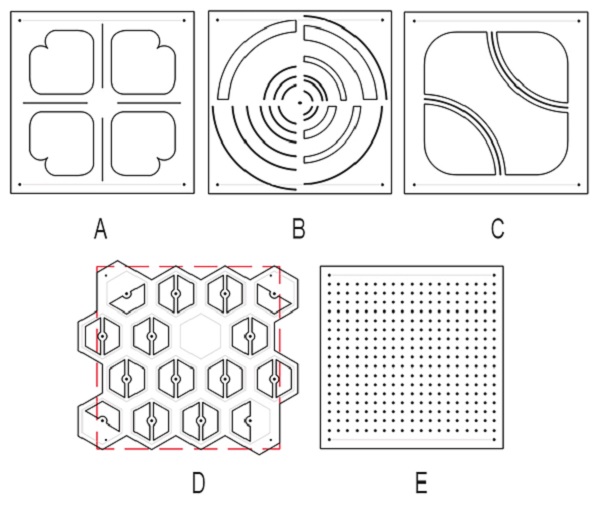
Fig.18. Prototype bases (Source: Authors)
was used the Design Studio Surfaces INPLAY. This Design Studio was of great importance to test in a practical way the work method, the proposed digital simulation tools, Rigid Origami geometry, materials, kinetic and mechanic systems and digital fabrication.
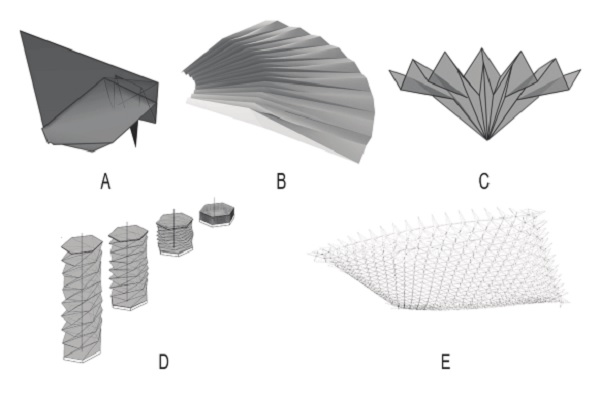
Fig.19. Digital Simulations (Source: Authors)
From the developed prototypes it was possible to verify that the fixed points on a kinetic structure can be very important for the surfaces behaviour and capacity of compression but it is also possible to construct them without any fixed points, at least in suspended situations.
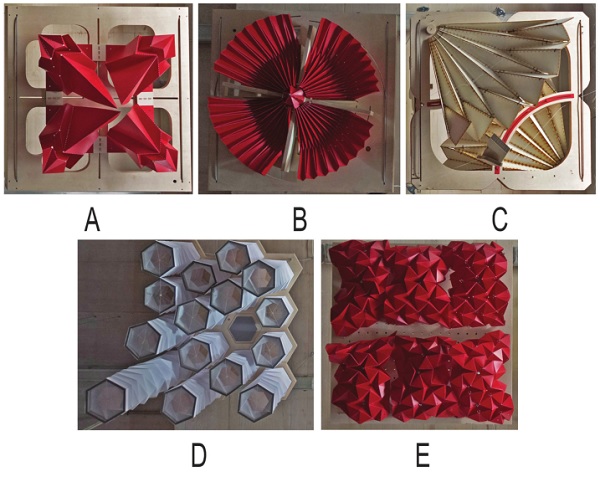
Fig.21. Prototypes (Source: Authors)
The geometry of the pattern, the used material and the force of the motors used are also key factors for the range of compression this surfaces can undertake.
It was verified physically the importance of starting the movement with the pattern already slightly folded, in the case of prototype C, for instance, was impossible to make it move and fold if it was not initially folded.




























Comments